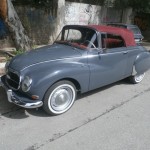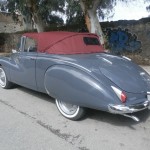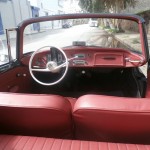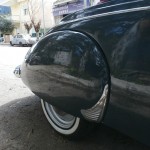If you’ve been following my 6-part documentary on the Silver Arrows, you’ve seen the four rings of the Auto Union pop up. Now synonymous with Audi, the Auto Union was in fact four different companies that banded together, much like the Volkswagen Group of today. Like the Volkswagen Group, they had a range of cars; Horch for ultra-luxury, Audi was the sportier gentleman’s car, Wanderer covered the middle range and the entry level products and motorcycles were covered by DKW. All of the companies, independently, had significant history, but as we’ve seen in the Silver Arrows documentary, the depression years in the 1920s and 1930s meant that just like Daimler and Benz, the Auto Union was a partnership formed out of necessity for survival in a market where few cars sold. However, as we’ve also seen, the massive investments in infrastructure and breaks on taxes meant that the automobile industry was experiencing a big push by the mid 1930s, coupled with new technology and aerodynamic designs. One of the most promising designs for the Auto Union was the DKW F9; a versatile, aerodynamic small car, it resembled the KdF “Volkswagen” (Beetle) prototypes but was more refined. However, the outbreak of the war stalled the project, slated to launch in 1940. As with other similar projects by German automobile companies, the remnants of the company picked up the project in the late 1940s, and the “new” DKW F91 project rolled out in 1953 as the DKW 3=6 “Sonderklasse”. With a .9 liter two stroke inline-3, the performance wasn’t going to shock you but it was a cleverly packaged car and sold well. It was replaced in the late 1950s by an updated version, now named the Auto Union 1000; updated lightly and with more power from the now 1.0 liter motor, it was available in 5 different configurations and was the basis for the much loved but rarely seen 1000SP roadster – the mini-Thunderbird. Today’s example is an interesting 1962 coupe that apparently was converted into a cabriolet at some point:
CLICK FOR DETAILS: 1962 Auto Union 1000S Cabriolet on eBay
Year: 1962
Model: 1000S Cabriolet
Engine: 1.0 liter inline-3
Transmission: 3-speed manual
Mileage: Not Listed
Price: Reserve Auction
A PERFECT EXAMPLE OF A DKW 1000S CABRIOLET(CONVERSION) WITH FULL EXTERIOR,INTERIOR AND ENGINE RESTORATION.A STUNNING CAR WITH THE MOST DESIRABLE COLOUR COMBINATION(DARK GREY WITH BORDEAUX HOOD AND RED LEATHER INTERIOR).RUNS VERY GOOD.SIX VOLT NEW BATTERY,NEW VREDESTEIN CLASSIC TYRES,GOOD BRAKES AND NICE QUIET EXHAUST.THIRD OWNER AND ALL THE PAPERS ARE AVAILABLE FOR EXPORT.THE CAR LOCATED IN ATHENS IN A CLOSED GARAGE AND READY TO RUN.IF YOU WANT MORE PHOTOS OR A VIDEO FEEL FREE TO ASK.
From what I can tell, they did a beautiful job overall on the conversion and the restoration has left this 1000S as one of the nicest available. There are a few odd angles on the top, but overall it appears as a factory car would have and the color combination is stunning and one of my favorite. As an affordable classic, these Auto Unions will leave many with their heads scratching, unaware that the company even existed at that point. It may seem like the odd choice, but compared to some other period German metal – the Mercedes-Benz 190SL, for example – this is a neat looking and unique alternative to the norm and a special bit of the modern Audi’s history. While it was obviously not the inspiration for the TT, you can see several of the 8N’s lines mimic the 1930s DKWs and nearly appear as a retro-inspired update of the F9 design. It may have been unintentional, but it’s a fitting tribute to a mostly forgotten but very important car.
-Carter











“TT Prototype”…and an ALMS at that! 😀 Only downside here (assuming it floats your boat and you have some WTF-$$$ in your front pocket) is you have to go to Greece to get it.